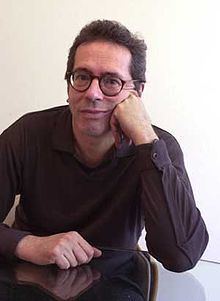Name Cesar Aira Role Writer | Movies Suddenly | |
 | ||
Occupation Novelist, Short Story Writer, Essayist Awards Guggenheim Fellowship for Creative Arts, Latin America & Caribbean Books How I Became a Nun, Ghosts, An Episode in the Life of a Land, The Literary Conferen, The Hare Similar People Osvaldo Lamborghini, Jorge Luis Borges, Ricardo Piglia, Juan Jose Saer, Rodolfo Enrique Fogwill | ||
Ce sar aira interview literature is the queen of the arts
César Aira (Argentine Spanish: [ˈse.saɾ ˈai.ɾa]; born 23 February 1949 in Coronel Pringles, Buenos Aires Province) is an Argentine writer and translator, and an exponent of Argentine contemporary literature. Aira has published over eighty short books of stories, novels and essays. In fact, at least since 1993 a hallmark of his work is an almost frenetic level of writing and publication—two to four novella-length books each year. He has lectured at the University of Buenos Aires, on Copi and Arthur Rimbaud, and at the University of Rosario on Constructivism and Stéphane Mallarmé, and has translated and edited books from France, England, Italy, Brazil, Spain, Mexico, and Venezuela.
Contents
- Ce sar aira interview literature is the queen of the arts
- C sar aira interview my ideal is the fairy tale
- His work
- Style
- References

C sar aira interview my ideal is the fairy tale
His work

Besides his fiction, and the translation work he does for a living, Aira also writes literary criticism, including monographic studies of Copi, the poet Alejandra Pizarnik, and the nineteenth-century British limerick and nonsense writer Edward Lear. He wrote a short book, Las tres fechas (The Three Dates), arguing for the central importance, when approaching some minor eccentric writers, of examining the moment of their lives about which they are writing, the date of completion of the work, and the date of publication of the work. Aira also was the literary executor of the complete works of his friend the poet and novelist Osvaldo Lamborghini (1940–1985).
Style

Aira has often spoken in interviews of elaborating an avant-garde aesthetic in which, rather than editing what he has written, he engages in a "flight forward" (fuga hacia adelante) to improvise a way out of the corners he writes himself into. Aira also seeks in his own work, and praises in the work of others (such as the Argentine-Parisian cartoonist and comic novelist Copi), the "continuum" (el continuo) of a constant momentum in the fictional narrative. As a result, his fictions can jump radically from one genre to another, and often deploy narrative strategies from popular culture and "subliterary" genres like pulp science fiction and television soap operas. He frequently refuses to conform to generic expectations for how a novel ought to end, leaving many of his fictions quite open-ended.

While his subject matter ranges from Surrealist or Dadaist quasi-nonsense to fantastic tales set in his Buenos Aires neighborhood of Flores, Aira also returns frequently to Argentina’s nineteenth century (two books translated into English, The Hare and An Episode in the Life of a Landscape Painter, are examples of this; so is the best-known novel of his early years, Ema la cautiva (Emma, the Captive)). He also returns regularly to play with stereotypes of an exotic East, such as in Una novela china, (A Chinese Novel); El volante (The Flyer), and El pequeño monje budista (The Little Buddhist Monk). Aira also enjoys mocking himself and his childhood home town, Coronel Pringles, in fictions such as Cómo me hice monja (How I Became a Nun), Cómo me reí (How I Laughed), El cerebro musical (The Musical Brain) and Las curas milagrosas del doctor Aira (The Miraculous Cures of Dr. Aira). His novella La prueba (1992) served as the basis—or point of departure, as only the first half-hour follows the novella—of Diego Lerman's film Tan de repente (Suddenly) (2002). His novel Cómo me hice monja (How I Became a Nun) was selected as one of the ten best publications in Spain in the year 1998.


